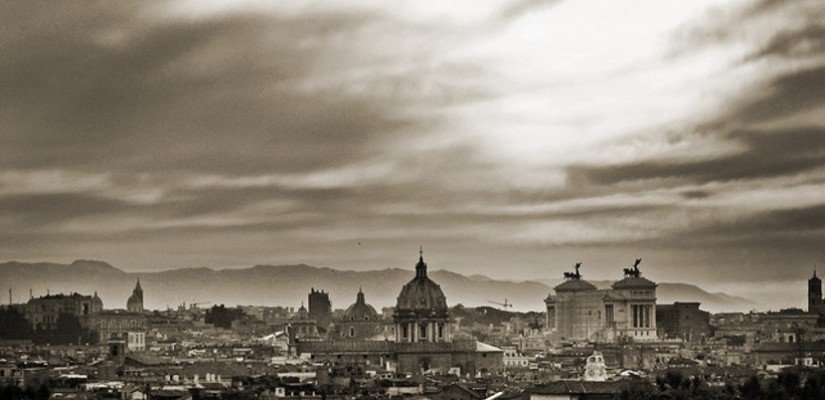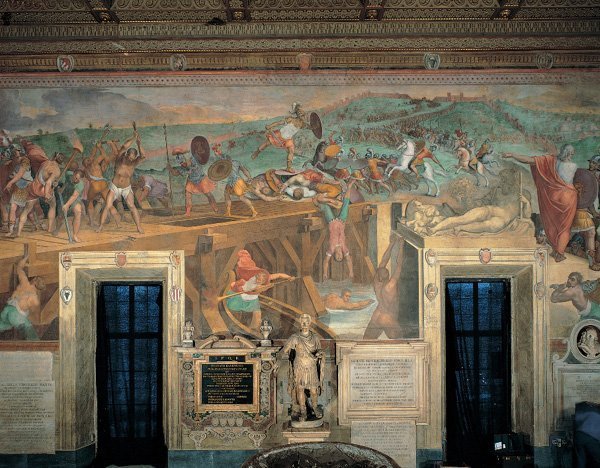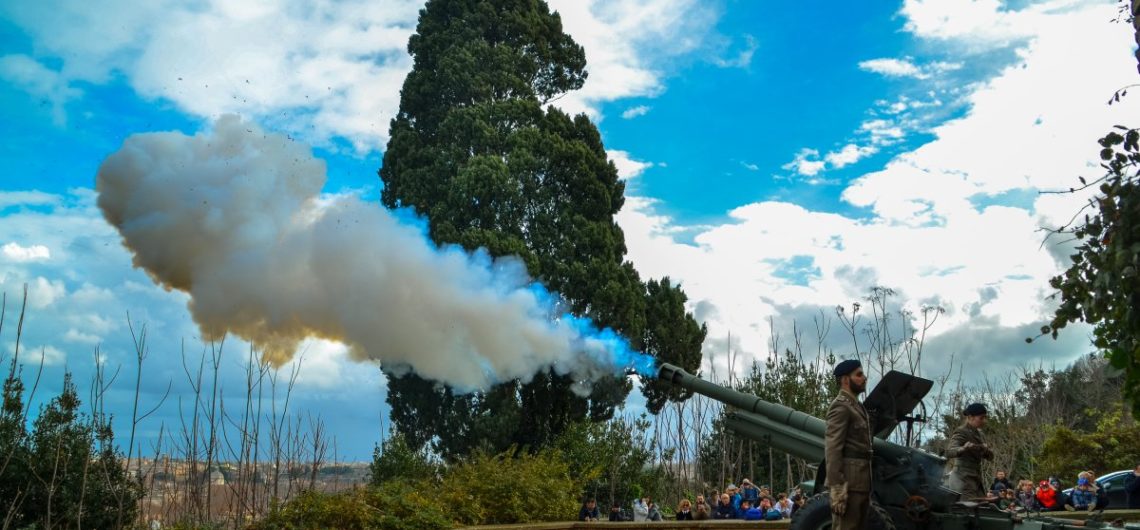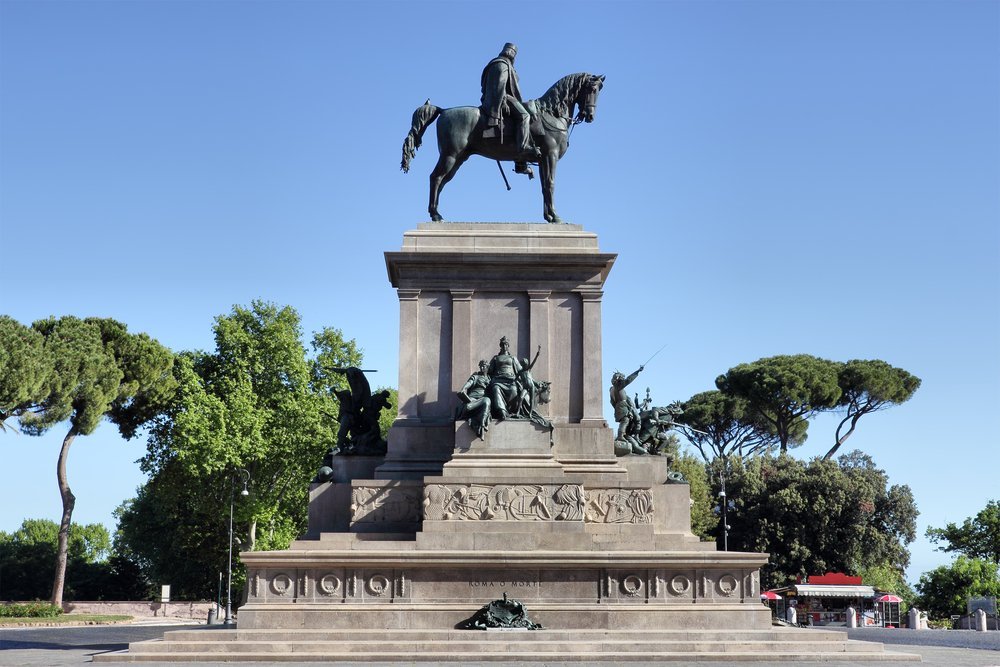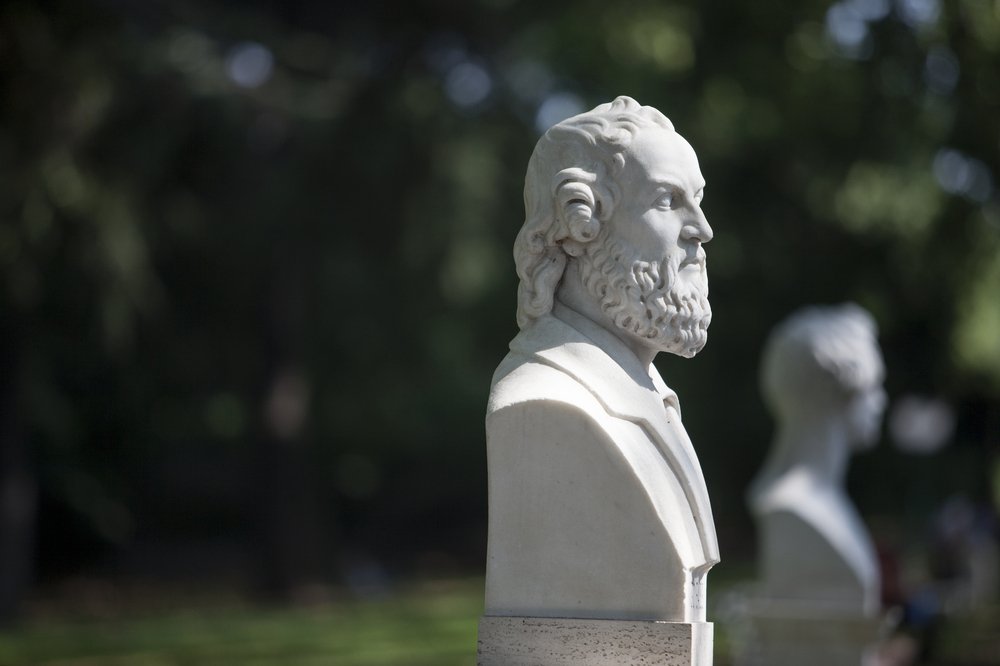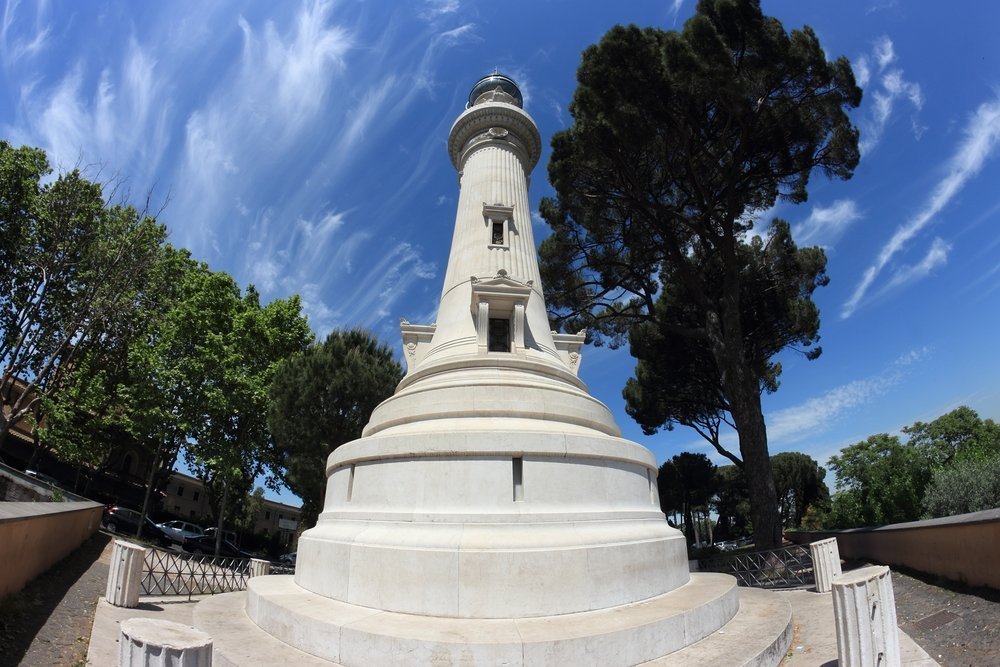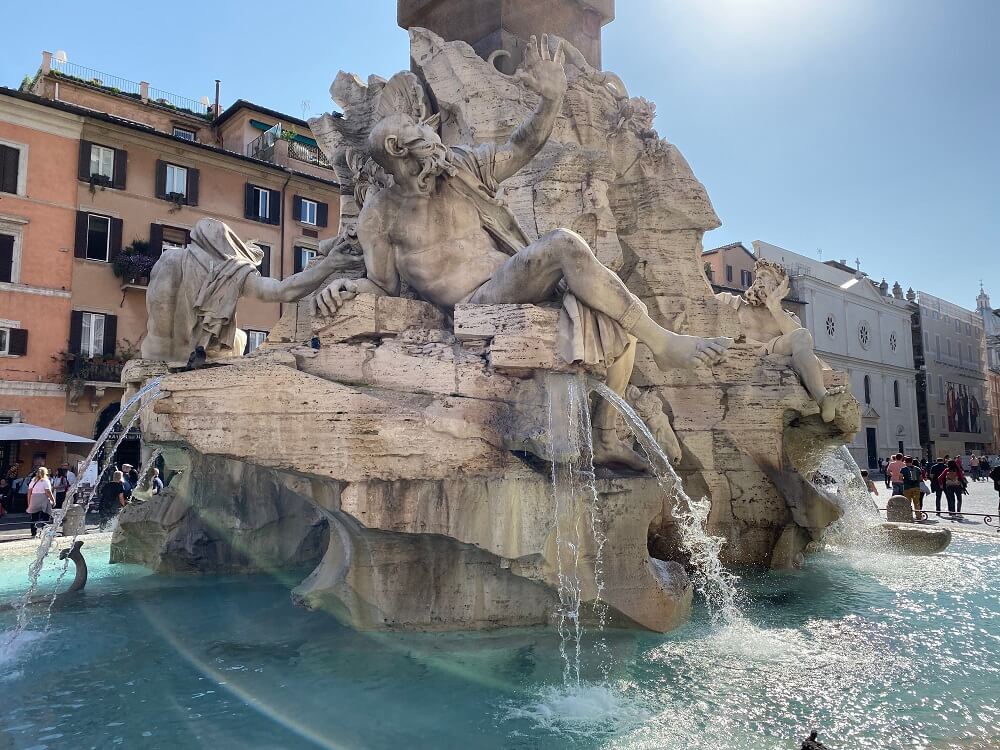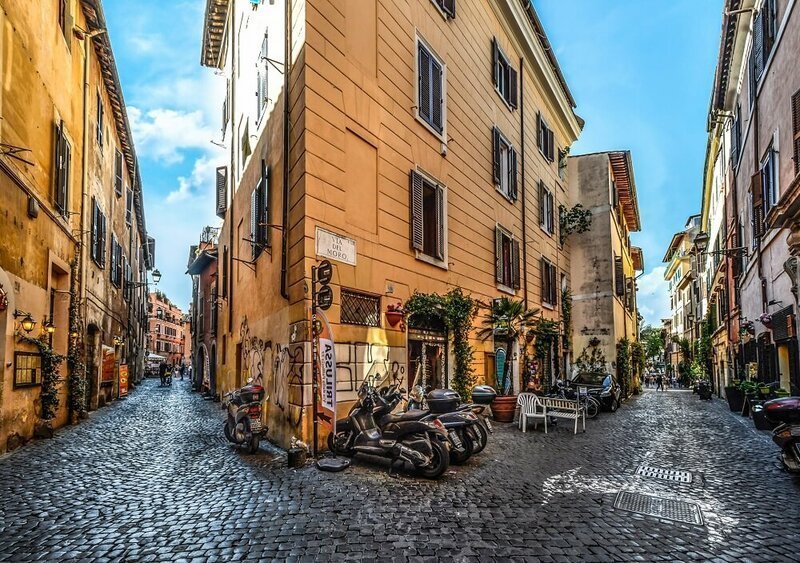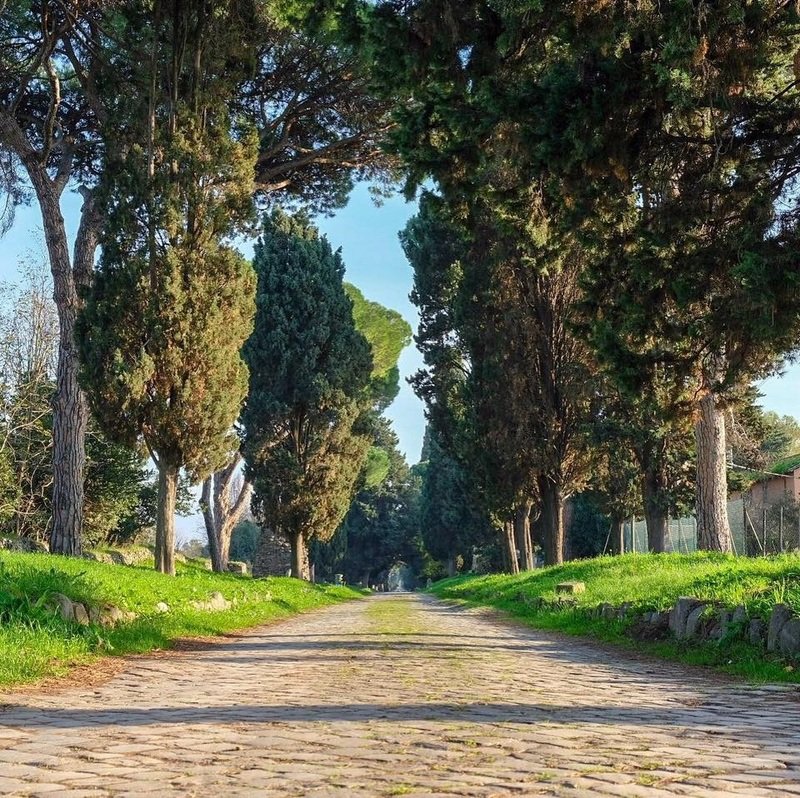Sometimes called the “Balcony of Rome,” the Janiculum Hill offers a stunning panorama over the city. Being situated across the river from Rome’s historic center, the Janiculum doesn’t count among the fabled Seven Hills of Rome. But millennia of activity have left a wealth of historical wonders just waiting for you to explore.
The Janiculum Hill’s History
Named after the ancient two-faced god Janus, whose shrine once sat atop the hill, the Janiculum Hill was incorporated into the Rome’s city defences from very early, in the seventh century BC.
The man credited with doing with was Rome’s legendary 4th king Ancus Marcius. He connected the Janiculum with the Aventine Hill by building the Pons Sublicius across the River Tiber. This ancient bridge no longer survives (though you can see what it looked like from this fresco in the Capitoline Museums), but its modern equivalent still connects Trastevere with Testaccio.
The Romans had good reason for fortifying the Janiculum Hill – it offered a fantastic vantage point. Whenever the Senate held public assemblies on the Campus Martius, they sent a soldier to the top of the Janiculum.
Responsible for checking for the threat of approaching Etruscans from the northwest, the lookout would wave a red flag it all was clear – signalling that the meeting could go ahead.
When to climb the Janiculum Hill
There are two times in particular you should aim to ascend the Janiculum Hill. The first is at sunset, when the view is the most breathtaking. The second is at noon, which will get you there in time to see—or rather hear—its cannon – a tradition dating back over 150 years.
What to see on the Janiculum Hill
The Janiculum Hill Cannon
Every day since 1904, a cannon round is fired from the Janiculum Hill. But fear not – it’s not live. It’s a blank round intended not to bombard the capital but to help set the time.
This tradition started with Pope Pius IX in 1847. Presumably peeved at the constant chime of church bells, the pope commanded that a blank round be fired from a cannon every midday to make sure they chimed together.
In keeping with tradition, this cannon, originally taken from Castel Sant’Angelo, has fired a round every midday beneath the statue of Giuseppe Garibaldi since 1904. It still sets a marker against which attentive Romans can check their watches.
Whether it helps improve the city’s time-keeping is something you’ll have to judge for yourself.
The Fountain of the Acqua Paola
Anyone who’s seen Paolo Sorrentino’s La Grande Bellezza (‘Great Beauty’) might remember the dramatic opening scene on the Janiculum Hill. It’s a hot, summer Roman day, and a group of tourists are looking out over the city. One man in the group, overwhelmed by the heat, beauty (or both) passes out, to a contrastingly chilling acapella choral soundtrack.
What makes this scene powerful? Is it the soundtrack? The shock of the tourist fainting? The mundanity of daily life playing out behind an extraordinary event? A large part of it must be the setting, and the Janiculum Fountain takes center stage – both for the choir and for the camera.
–> Click here for our article about the most beautiful fountains of Rome.
The Equestrian Monument to Giuseppe Garibaldi
Presiding over the city on the highest point of the Janiculum Hill, the Garibaldi Monument dates from 1895 – 20 years after the liberation of Rome. Fashioned from bronze, it stands on a marble base, inside which are the remains of his Brazilian wife, Anita Garibaldi.
The Garibaldi Monument is pregnant with symbolism. On its right is a crown, commemorating the fact that Garibaldi was the first of the Italian freemasons. The bas reliefs show his achievements – his disembarkment at Marsala, the resistance at Boiada, the defence of Rome, and the ‘liberty group’.
As well as its symbols, the monument’s position is also significant. Erected while relations between the King of Italy and the Holy See (Vatican) were strained to say the least, there are differing interpretations as to the position of Garibaldi and his steed.
One interpretation goes that Garibaldi is staring towards Saint Peter’s Basilica. Another is that his horse’s rear is purposefully facing towards the papal state – an insult repeated elsewhere in Rome on Bernini’s Minerva Obelisk.
The Janiculum Promenade
Otherwise known as the Parco degli Eroi (Hero’s Park), this promenade on the Janiculum Hill serves as a monument to the 84 partisans who fought and died protecting the Roman Republic from the French invasion of 1849.
The occasion of this invasion was the replacement of the papacy with republican government in Rome. Garibaldi and other revolutionaries fought and died to protect their newly found state – the constitution of which is written on a wall running along the promenade.
The promenade is stunning in spring and summer, giving off heady floral scents of sycamore, cypresses, oak, and magnolia. It’s also home to several woodland species, who are protected here from the nearby bustle.
The Manfredi Lighthouse
A lighthouse on a landlocked hill might strike you as strange, but in Rome you should always expect the unepxected. Standing atop the Janiculum since 1911 is the Faro al Gianicolo (Janiculum Lighthouse).
The lighthouse was donated as a gift for the city from Italians who had emigrated to Argentina. It goes by another name – the Manfredi Lighthouse – after the name of its creator, Manredo Manfredi.

